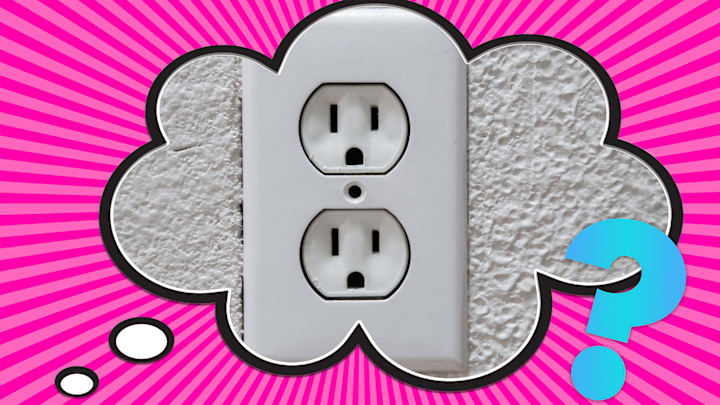If you live in the U.S., you’re familiar with the holes in the prongs of electrical plugs. Many, if not most, American plugs have them. So what exactly are they for?
The answer dates back to the early 20th century, when Harvey Hubbell Jr. patented a number of electrical plugs (starting with the first-ever detachable electric plug in 1904). Some of Hubbell’s designs featured prongs with indents that aligned with little bumps inside electrical sockets. When you inserted a plug into a socket, the indent-and-bump system helped secure the prongs in place. The indents eventually gave way to holes, which, according to HowStuffWorks, functioned the same way.
But that’s only part of the story. As various YouTubers have demonstrated, modern outlets typically no longer have the bumps—they use friction and pressure to keep plugs from falling out of the wall. These days, the holes serve other purposes. Some manufacturers, like those in the video below, insert a rod through all the holes in a line of prongs to lock them in place while they encase them in plastic.
Cautionary messages can also be threaded through the holes, effectively guaranteeing that consumers see the warning before using the attached device. Manufacturers can even fasten a diminutive lock or zip-tie through one or both holes as a means of factory-sealing. Another popular theory is that the holes save metal, which helps cut costs over time.
According to official regulations laid out by the American National Standards Institute (ANSI) and the National Electrical Manufacturers Association (NEMA), the holes are “optional” and “intended for manufacturing purposes only.” But if you want to put a tiny padlock through a plug hole to keep your kids from powering up certain devices, NEMA probably won’t mind.
Have you got a Big Question you'd like us to answer? If so, let us know by emailing bigquestions@mentalfloss.com.
Read More Big Questions Below:
A version of this story was originally published in 2022 and has been updated for 2025.
